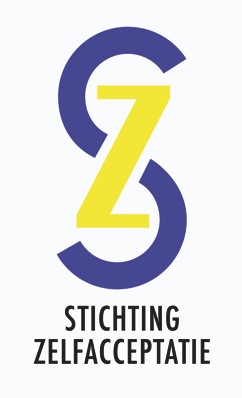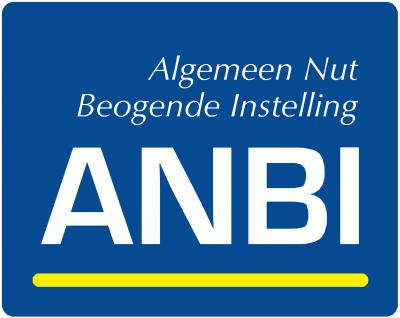What role has Self-Acceptance on our mental health?
The World Health Organization defines mental health in a positive way: ‘ a state of well-being in which the individual realizes his or her own abilities, can cope with the normal stresses of life, can work productively and fruitfully, and is able to make a contribution to his or her community (WHO, 2005, p. 2) In the subsequent explanation of this definition distinguishes the WHO three components: 1) well-being, 2) the effective functioning of the individual in the sense of self-realization and 3) the effective functioning in society. The definition of the WHO refers to self-realization as a second important component of mental health. Professor Carol Ryff, American psychologist, finally found six criteria that are essential in the general effort to realize your own potential (Ryff, 1989; Ryff & Singer, 1998). The fifth dimension concerns Self-Acceptance: positive attitude towards yourself; recognition and acceptance of different sides of oneself including positive and negative characteristics; positive feeling about the past and the course of one’s life.
Can you achieve full self-development without Self-Acceptance?
No, without Self-Acceptance a human being shall not realize full self-development. With reference to the question above and the role that Self-Acceptance has in the effective functioning of the individual in the sense of self-realization and also approaches based on the needs pyramid (5 levels) of A. Maslow, each person runs through a certain pattern of needs in his life. According to A. Maslow, American clinical psychologist, self-development is the fifth and final level. According to this theory, a human being strives to satisfy needs that are placed higher in the hierarchy after the lower placed needs are fulfilled. When a staircase is missing or drops, a human being will comply this need before he or she can increase further. It is important to work on strengthening the basic trust because a lot of people are stuck at the level of the security needs, making them uncertain and many suffer from fears. Having Self-Acceptance is of fundamental importance. Self-Acceptance is a basis for a human being to function and to feel good.
What is the relationship between Self-Acceptance, bullying and discrimination?
Bullying and discrimination in our society, as we know, is serious business. It can cause “unrecoverable” personal damage. The consequence; major psychological problems and violent feelings of inferiority at many people which eventually can lead to committing suicide more frequently. Bullying and discrimination are focused on shortcomings of “less good” characteristics and qualities. It finds its origin in the urge of profiling yourself at the expense of others. A human being who’s satisfied with themselves and is feeling very well has no need to bully others nor to discriminate others for self-profiling. The impact of bullying and discrimination is less big if you accept your less good characteristics and/or qualities. Who has Self-Acceptance, is satisfied with itself. The person is more empowered against what other people think or say about him/her. Feelings of inferiority are limited and have little grasp to the person.
What relationship has Self-Acceptance with anxiety and perfectionism?
An individualistic society which have to be fulfilled with an ideal image that focuses on physical characteristics. Then you will not fail but meet the required expectations. It is important what others think and find about you. We want to fit in and not be rejected. Anxiety, fear of failure. To fall short or not to meet certain expectations set by yourself or others. Examples are: fear of failure in sports performance, cognitive performance (homework, test, driving test, or a final exam) or social activities (speech, giving a lecture). Their appearance, social behaviour or sexual performance can lead to anxiety at adults as well. Negative experiences or failures can increase the risk of anxiety. Anxiety has a crippling effect on your performance. Anxiety leads to perfectionist behaviour. Everything is being done to prevent failure. The bar should be set as high as possible. Who scores a 9 or a 10 knows that other people’s reactions will be positive. The compliment is the desired response. We receive no criticism. People who suffer from perfectionism often set unattainable high standards for themselves and others. In many cases caused by uncertainty. A perfectionist may also be ashamed when he cannot meet his own expectations and tries to hide it. It can lead to social isolation, under performance or even a depression. Whoever finds himself not so successful, is doubting their own qualities. The self-confidence is inadequate, and he or she will try to compensate this with perfectionist behaviour. The human being who has Self-Acceptance, finds it less important what others people find or think of him. Own characteristics and qualities are accepted, errors are human and may be made. The human being is less sensitive for criticism. The bar of performance can be laid at a level where a healthy balance is present.
What relationship has Self-Acceptance to feelings of inferiority and self-esteem?
We give everything a name linked to a definition. We paste a label/sticker, we categorize it and we give it a value judgement. In short: something is good, sufficient or bad. However, as a human being we are all equivalent to each other. The characteristics and properties differ. At Self-Acceptance the human remains intact and it is important that the individual characteristics and qualities are accepted. Self-esteem implies that we can ‘ upgrade ‘ or ‘ downgrade ‘ ourselves. We constantly have to keep track on whether we are still worthwhile. It is disastrous for our well-being and functioning when we ‘downgrade’ ourselves to worthless. We feel inferior. The person who has ‘ upgraded ‘ itself and has built up ‘ self-esteem ‘ is in an unstable position. The danger of write-down is a continuous threat. A valid question is: are assigned value judgements correct, who or what has determined them? We do not became more or less human being, right? The person who realizes self-acceptance, accepts his/her characteristics and qualities and has no inferiority feelings. Self-esteem is not an issue.
What is the difference between Self-Acceptance and self-appreciation?
Definition of the word acceptance: adopt, accept, acts and circumstances as inevitable. Definition of the word appreciation: to appreciate it, determining value. With Self-Acceptance the person remains intact and is it important to accept their personal and individual characteristics and qualities. It is, after all, the characteristics and qualities that differ from each other. Self-appreciation implies that we can ‘ upgrade ‘ or ‘ downgrade ‘ ourselves. We constantly have to keep track on whether we are still worthwhile. It is disastrous for our well-being and functioning when we ‘downgrade’ ourselves to worthless. We feel inferior. The person who has ‘ upgraded ‘ itself and has built up ‘ self-esteem ‘ is in an unstable position. The danger of write-down is a continuous threat. A valid question is: are assigned value judgements correct, who or what has determined them? We do not became more or less human being, right?
Can people with Self-Acceptance easier lose their excess weight and lose weight?
Yes. Overweight brand, makes that people have less self-confidence they are more often bullied. The questions aside whether someone is over weighted or not, and how overweight arise and is obesity unhealthy and must be countered. How do you approach overweight in a world in which a significant part or even a majority of people is too thick. As something bad, that should be avoided or if okay situation that people are all different. A matter of conflicting values. On the one hand we must accept ourselves, on the other hand we see ourselves preferably not too thick. We must look according to a certain ideal image. Both messages pass conflicts. Promotion of self-acceptance is most important. It makes no sense to compare yourself with someone with a very different body construction. They are all different. Discontent and not accepting the personal properties and/or characteristics creates a situation of out of balance. Resulting in the development of eating disorders. People who have Self-Acceptance function and feel good. The fight against overweight will be better and easier to be overcome.

